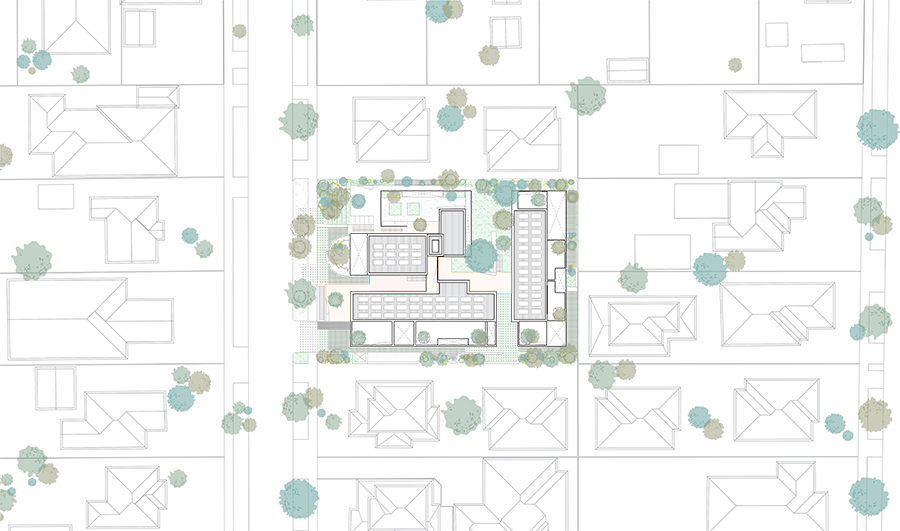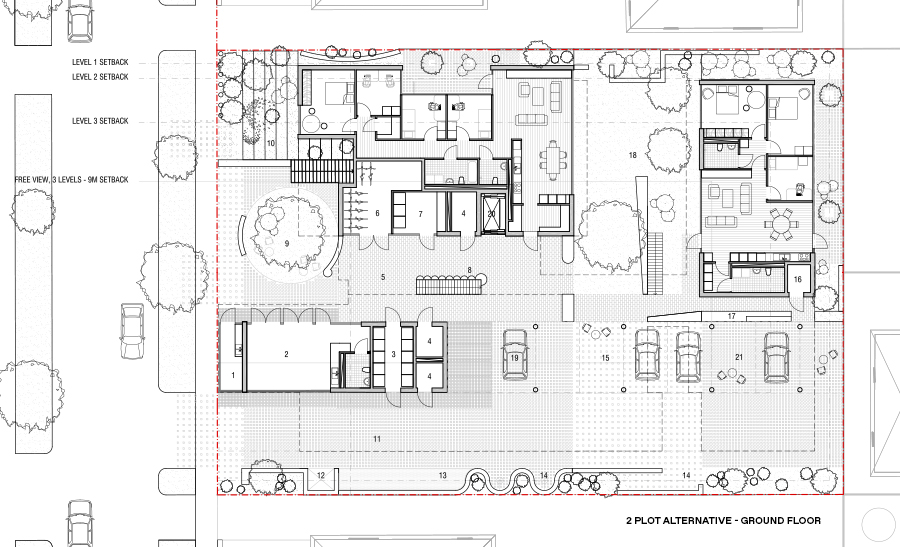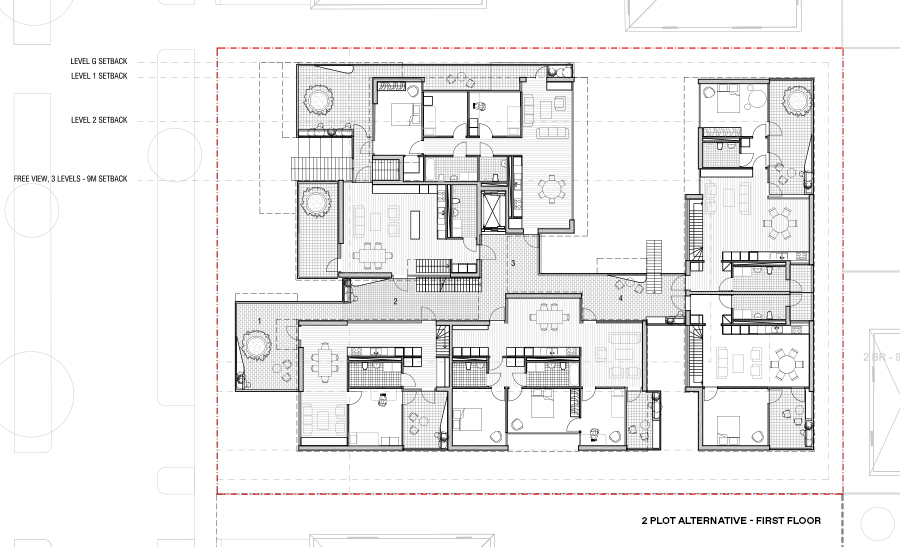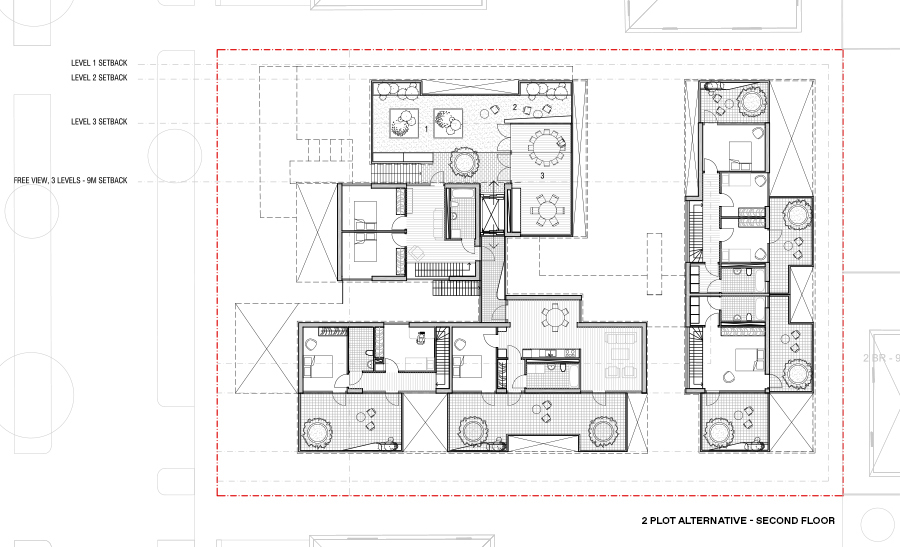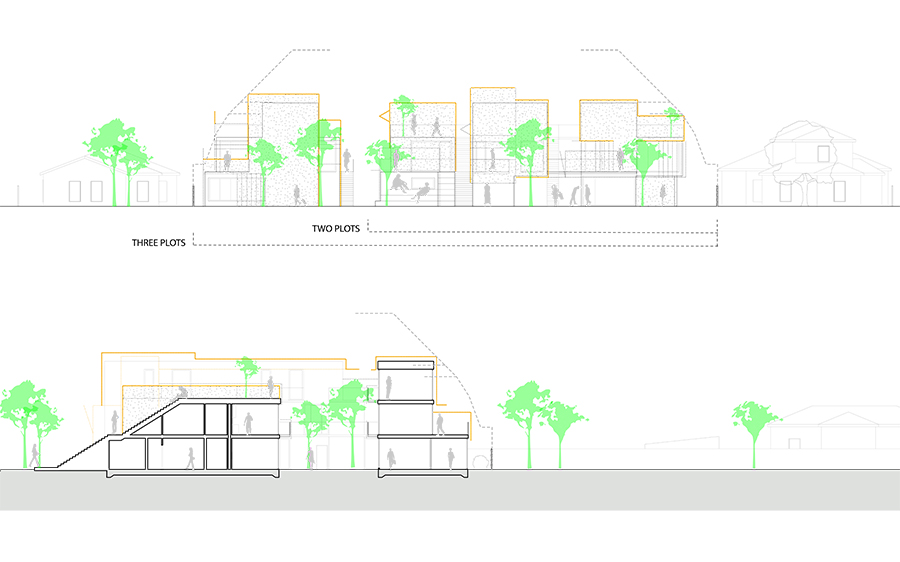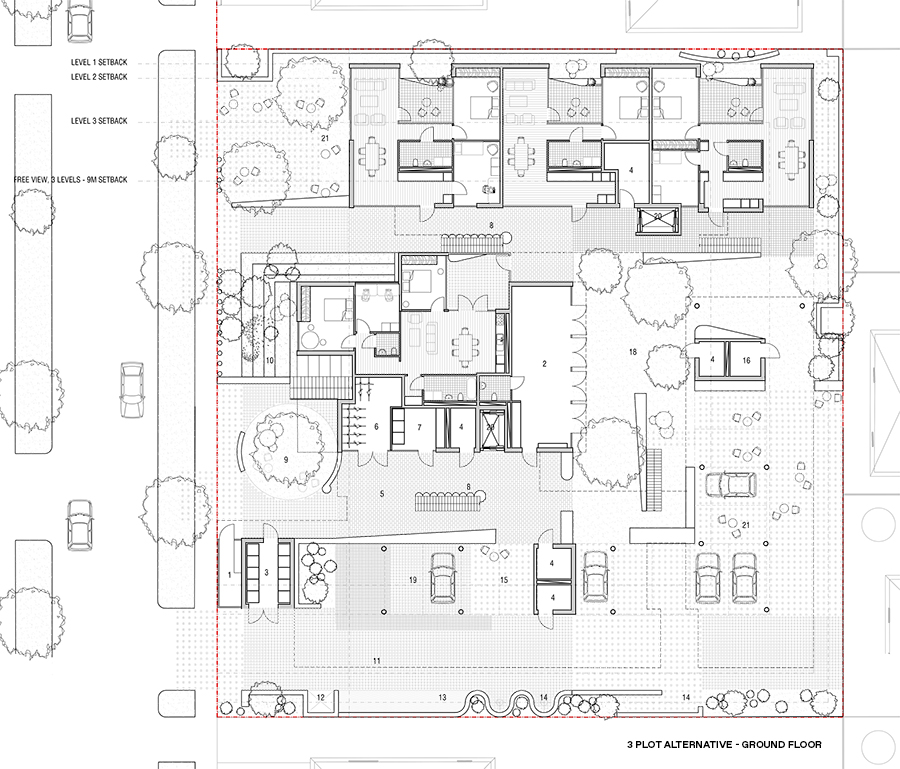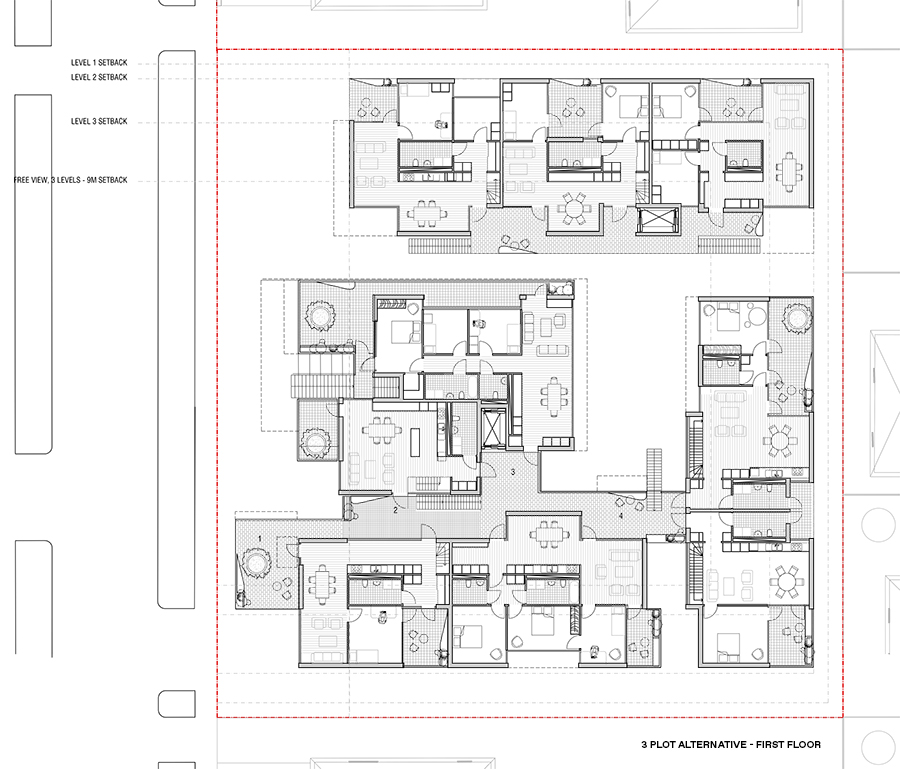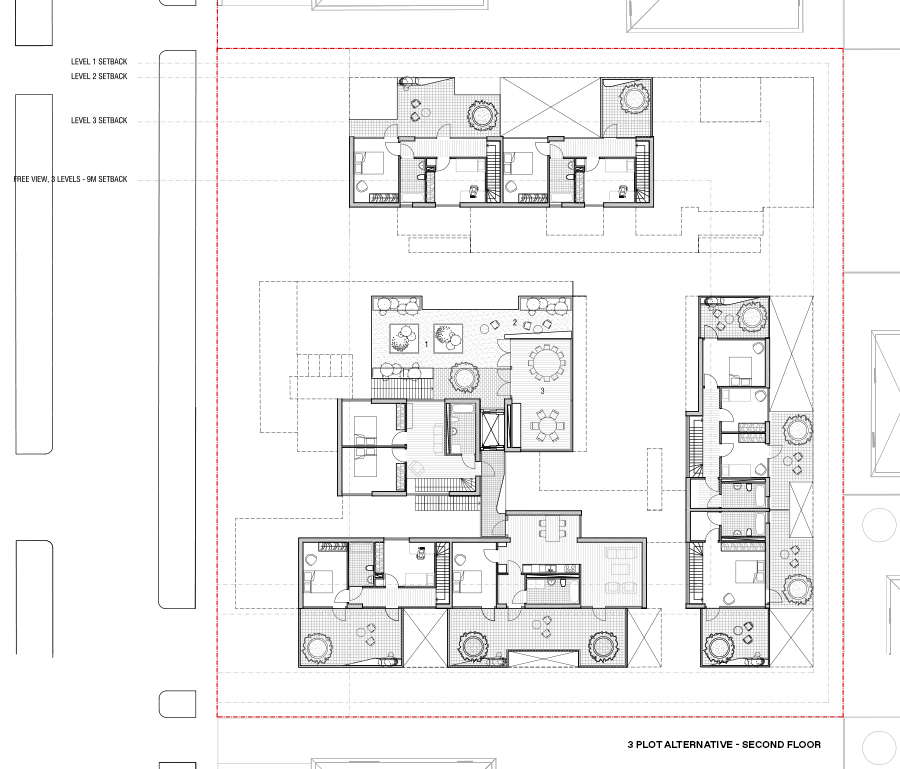FAMILY GRAMMAR
MEDIUM DENSITY, MODULAR, HOUSING TYPOLOGIES
FUTURE HOMES COMPETITION
WITH SIBLING
MELBOURNE, AUSTRALIA, 2020
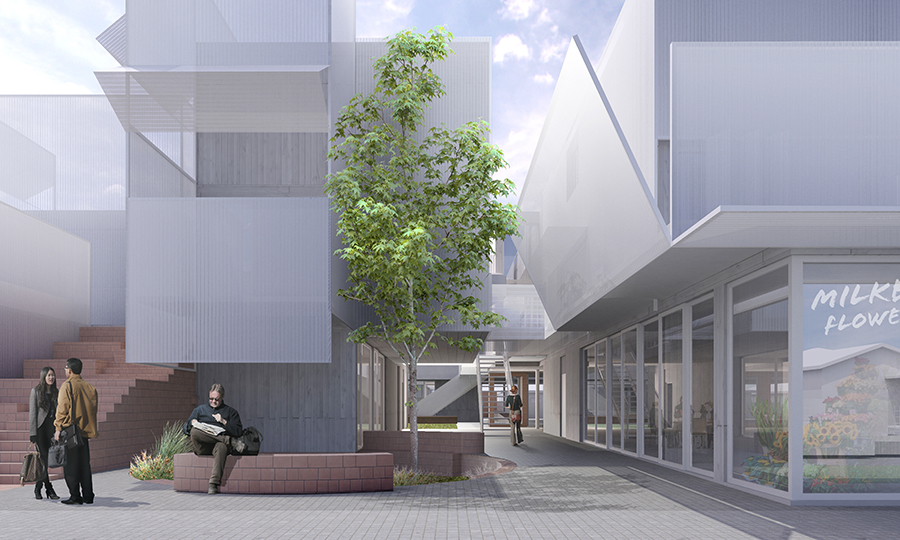
A NEW TYPOLOGY FOR THE MIDDLE RING SUBURBS
What might suburban living look like, beyond the 20th-century dream of a quarter acre block and outside of the post-war ideal of the nuclear family? In responding to the challenge of designing a replicable, medium-density housing scheme for Melbourne’s middle-ring suburbs—the brief of the Victorian Government’s Future Homes Competition—Secretary teamed up with Melbourne-based architecture practice SIBLING to think through a sensitive and progressive architectural addition to the city’s sprawling leafy suburbs. The result, FamilyGrammar, is a modular housing proposal that comprises of three well-considered apartment typologies, with deck access, over three levels.
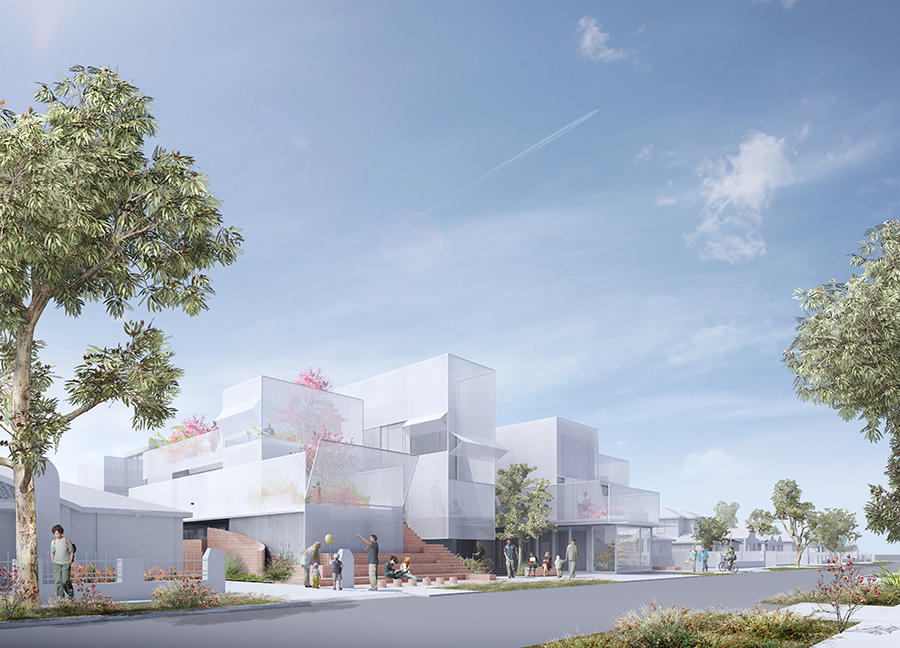
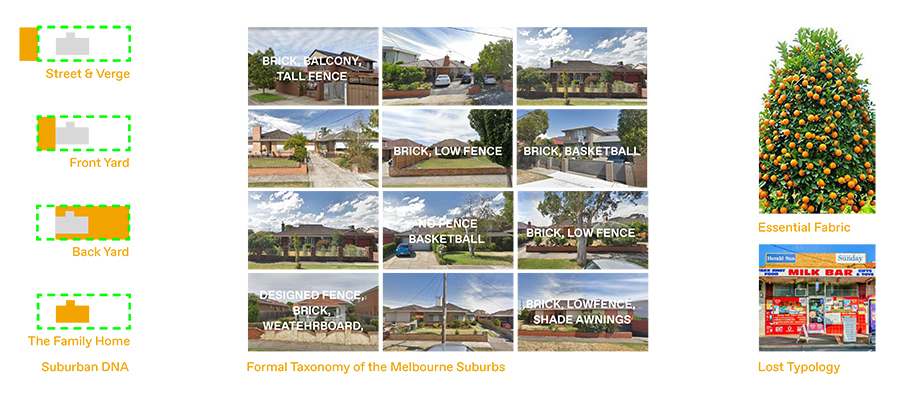
The scheme builds on a sincere admiration of Melbourne’s middle-ring suburbs, and the design of the ground plane was informed by a streetscape taxonomy prepared by Sibling in order to remotely introduce their Stockholm-based counterparts here at Secretary to the front gardens, verandahs, front fences, garages, and carports that give Melbourne’s middle-ring suburbs their distinctive character. The qualities of these landscapes are obvious: Plenty of space, interior and exterior, at a reasonable price. Access to greenery (and free lemons from the yard next door). Good neighbors and neighborhood BBQs. Basketball games in the driveway. Coming home to your own piece of secluded, sunlit turf. What might these core suburban values look like, we asked, when filtered through a new architectural grammar, at a higher density? How might a new typology amplify the amenity of suburban living, attenuating the sensitive balance between being together and being alone, being in view and being in private? We talked about this mix of short and long viewlines—the possibility of sunbaking naked in total privacy, and looking out over the rooftops on a warm night—in terms of a “suburban picturesque,” which was expressed through the design elements of “the stretched fence,” an approach to furnishing the communal spaces of the site; “the verge,” a public use zone within the front setback of the building; and “the veil,” a second facade that wrapped the buildings, providing privacy and deflecting views.
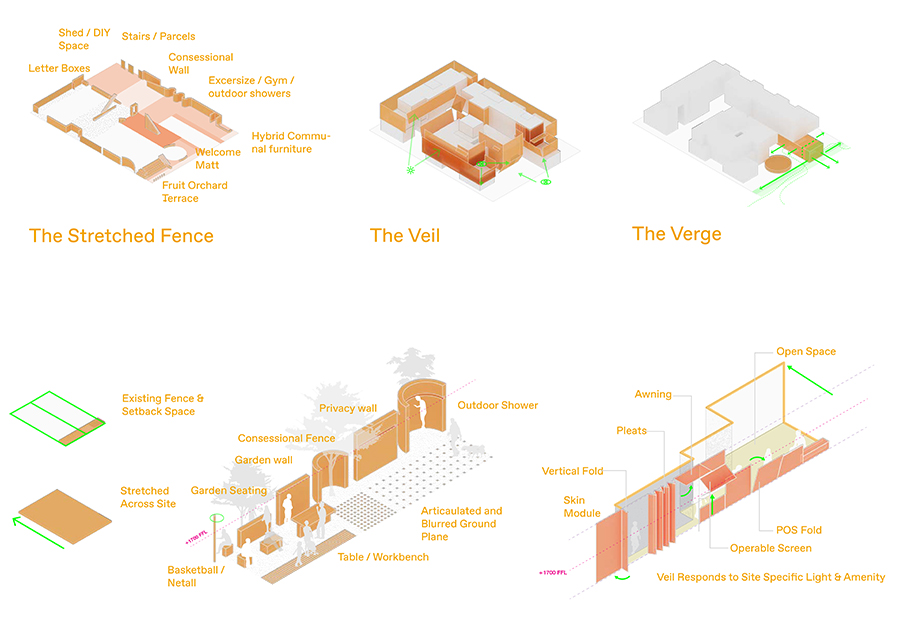
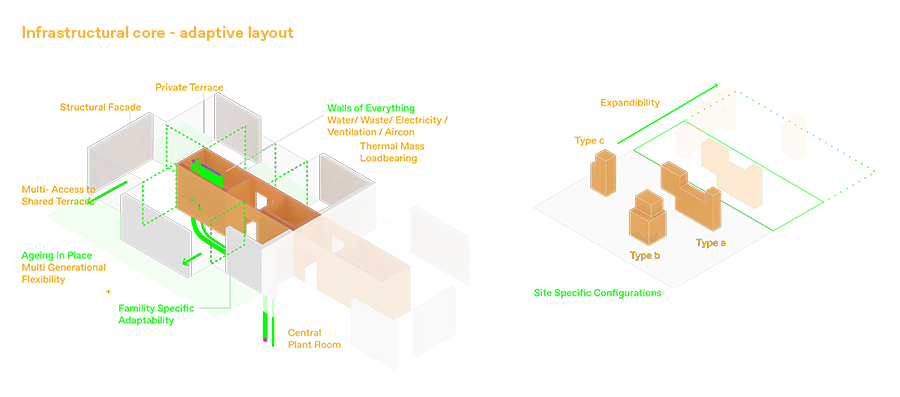
Each building type is built around a prefabricated core, which accommodates the technical infrastructures of the building, and comprises of a mix of apartment sizes, which are generally much bigger than what we are used to in Sweden. Adopting a mix of Swedish and Australian standards, the apartments have been rigorously designed to be spacious, light, and flexible; to work for a range of household constellations; and to be accessible for all bodies and ages. Building volumes are modulated in scale to respond to the low-rise nature of surrounding single-family homes, as well as the stringent demands of the Victorian planning scheme. A connective tissue made up of wide access balconies links the buildings across the site, providing deck access to apartments and generous communal balconies facing the center of the site and the street frontage. In Autumn, Swedes love to gather with friends and family for “kräftskivor” (crayfish parties); Secretary and Sibling joked that these shared access balconies should be “kräftskiva-compatible.” Where possible, apartments—and particularly kitchens—open onto these spaces.
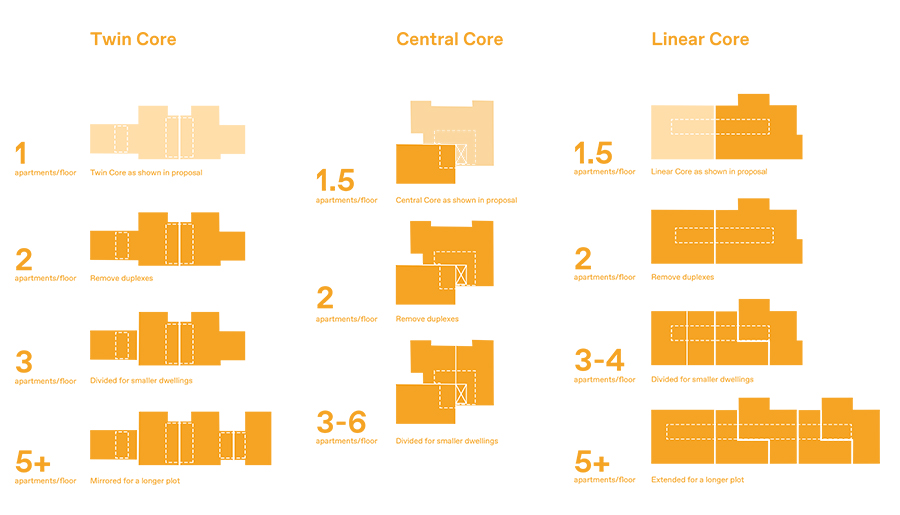
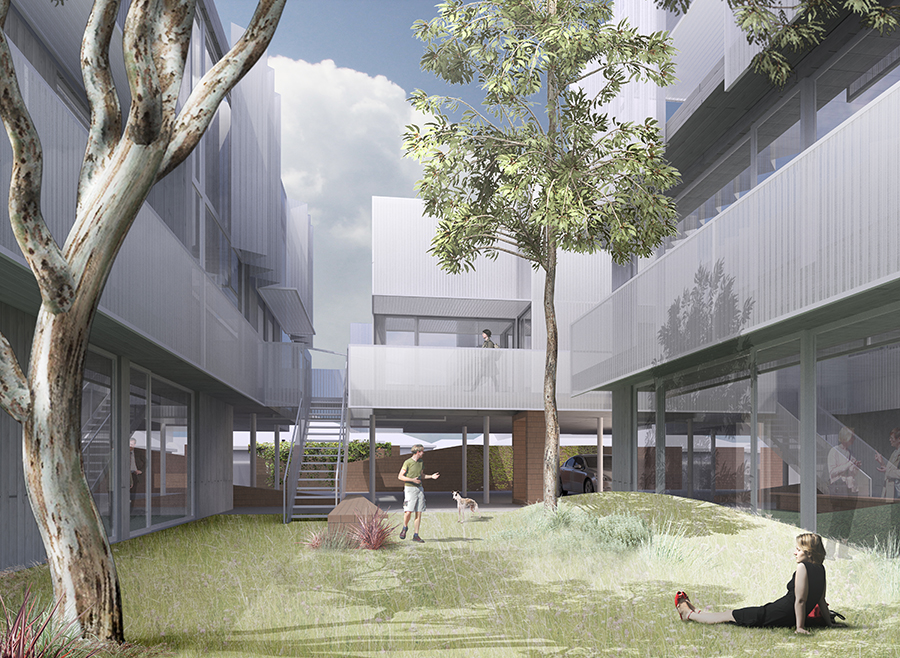
FamilyGrammar was designed by two offices located on opposite sides of the world, in the midst of the COVID-19 pandemic. The scheme emerged in response to regular late night/early morning discussions, as Australia moved into winter and Sweden edged towards summer. The resulting proposal demonstrates the value of collaborative design exercises in meeting the urgent demand for new, progressive, norm-critical models of housing for a coming generation of diverse urban households.
